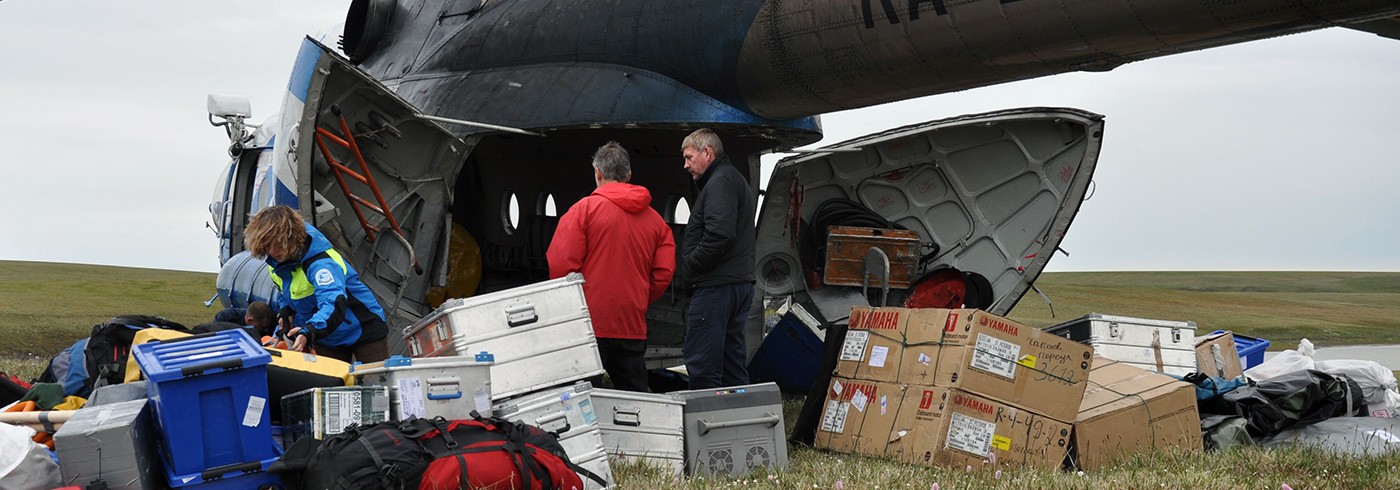Ice extent on the Taymyr Peninsula in time and space
5 July 2012 - 17 August 2012The Arctic is currently undergoing rapid and pervasive change, and the mechanisms driving climate change in northern latitudes appear to be gaining strength. As a result, knowledge of earlier climate change is fundamental to understanding and predicting what the future will bring.
Large parts of the continents and ocean shelves of the Northern Hemisphere have periodically been covered by massive ice sheets. Extending from Scandinavia eastwards was the Eurasian ice sheet, the extreme eastern end of which was the Kara Sea Ice Dome, an ice dome that has repeatedly built up and disappeared over at least the last roughly 500,000 years. During various times of maximum ice extent and subsequent deglaciation, large ice-marginal complexes were formed that can be traced for hundreds of kilometres on maps and satellite images. However, we are not entirely certain when these complexes were formed, as the dating methods previously available for research in these areas were completely inadequate.
The large ice-marginal complexes lie south of our earlier fieldwork areas, with the result that our most recent expeditions (2010 and 2012) have focussed on the southern Taymyr Peninsula. Here we find a number of large rivers that cut through the ice-marginal formations and lake and river sediment in the low-lying areas between them.
The fieldwork was conducted by sailing three inflatable boats down the Luktakh and Upper Taymyr rivers and up the Logata River, a total of some 600 km of highly serpentine meandering. Another 170 km boat trip was taken along the Khatanga River to a place called Novorybnoe. Geological studies were conducted from the established base camps by cleaning out and documenting the natural 5–30-m-high sediment exposures that these rivers have created along their channels. In addition to the geological documentation and interpretation of the earlier sedimentation environments, numerous samples were collected for 14C, ESR, and OSL dating of the sediments.
All the sampled material arrived in Sweden just before Christmas, and is now being sent to laboratories around the world for various age determinations. Only after we have obtained all the dating results, which will take just over a year, can we start to process our material and draw scientific conclusions. Future results will be published in high-ranking international scientific journals.
Mammoth tusk from sediment along the Logata River. Photo: Johanna Anjar





